Grass growth on our measuring farms was 20kg DM/ha/day this week. After a cold period, the mild damp weather has driven soil temperatures back upward and grass is responding.
Having crept back close to 6°C in the early weeks of February, soil temperatures in the south are now close to double figures, with 10°C recorded in Moorepark this week. Further north the story is similar. Grange and Ballyhaise recorded 7°C and 8°C soil temperatures respectively this week.
This means that grass is back growing again. If it hasn’t gone out already, urea needs to go out. There’s a 10:1 response on every kilogramme of nitrogen spread in the springtime. While the 20kg growth figure might seem impressive and reassuring, chances are that if you haven’t got slurry or nitrogen out yet, or cattle haven’t yet got out to graze, your own figure will be well back on this.
The process of grazing the plant acts as a kickstart for growth and grazing tight will remove any dead, fibrous material which accumulated during the winter. While there are some nutrients in this material that the animal can use, the fresh leafy regrowth that comes behind will be rich in highly-digestible fibre and as close to green rocket fuel as we can get. The fertiliser spread now will set things up for a burst of growth once the plant is grazed.
Common sense must prevail. Given recent weather, mature stock will leave marks on most ground at this point. Light stock are your grazing weapon now. Yearling heifers, for example, are perfect candidates to get grazing. Remember, the target is to graze a dry farm once completely by the first week in April. While it might be a tall order if nothing’s out at this point, we can try and get as close as we can.
![]()
Pick a day with no rain forecast in your area. Get yourself a decent weather forecast smartphone application – and give them around half their normal feed allocation the day before turnout. Don’t give them the full run of a field – rather one day’s worth of area, based on the grass cover. If heavy rain looms, bring them back in or stand them on a farm roadway/in a yard until it stops.

Sligo
Average farm cover: 516kg DM/ha
I am happy with how grass covers are looking at the moment and will walk the farm for an exact cover this weekend.
I have had 12 of my beef heifers at grass for the past two weeks. Here’s hoping they are out for good now until they are killed off grass next October at 20 to 24 months of age.
My 32 autumn 2016 calves have been out grazing all winter and they have performed very well. The on-off grazing has massive health benefits, especially during mild winters like the one just gone by.
I have just spread 2,000 gallons/acre of slurry on the fields which I will be cutting for silage. I will give this ground one good grazing when the slurry washes in and then it will be closed up and fertilised.
Before the week is over I plan to get out with urea. I will spread 23 units/acre on the better parts of the farm and will hope to get grazing these soon after.

Limerick
Average farm cover: N/A
There is very strong grass here at the moment, with covers of over 2,000kg DM/ha on ground that I closed up last October.
So far, I have 55 yearlings grazing by day and coming in at night. Getting these calves out now will help them to push on when they are weaned in April. It also halves their meal intake as they are only getting 0.75kg of ration now compared with 1.5kg without grass.
There is a high stocking rate here on the farm at the moment but I am confident that I have plenty of grass to meet demand. Sixty 300kg bucket-reared and suckler-bred weanlings which I purchased will be turned out next week and my 75 in-calf cows and heifers will also be going to grass shortly after. I will be selling 25 of these in-calf cows and heifers later in the year.
Last week, I spread two tonnes of lime to the acre on rented ground that I had soil-tested. This ground also got either slurry or 18:6:12 to boost P and K.

Kildalton College
Average farm cover: 490kg DM/ha
The average farm cover for the suckler paddocks is over 500kg DM/ha, with the overall sheep and beef unit at 490kg DM/ha.
Most of the grazing ground got 1,500 gallons/acre of slurry in late January using a trailing shoe and this was followed with 0.5 bags of urea/acre in mid-February. Growth rates have been between five and 15kg DM/ha over the past five weeks.
Calving started on 10 January and we have 35 cows calved out of 62, with 30 live calves on the ground, after a very poor start due to different reasons. The first 18 suckler cows and calves were let out on 6 February into a cover of 1,050kg DM/ha.
We slaughtered some of the 24-month-old cattle in late January and early February, with the continental cross stock averaging 385kg carcase weight and the Fr X steers from the calf to beef unit averaging 345kg. The stock in the under-16-month system are currently weighing an average of 491kg and have been built up on to an ad-lib diet.

Donegal
Average farm cover: N/A
It’s not often that I would be able to let cattle out at this time of year but I have had yearling heifers out grazing strong grass covers for the past two weeks. I let them out to mix a tank and I ended up leaving them there due to the exceptional ground conditions.
All my calves were born between November and January and these are well fit to be out so I have them grazing during the day at the moment. This will also help to break the maternal/offspring bond.
Half of the farm was grazed with sheep and is bare. However, I walked the other half and I am happy with what I have.
I spread 30 acres with slurry last Monday week with an umbilical system and trailing shoe. I targeted these 30 acres to get grass growing. I believe there is definitely a better response to slurry spread with a trailing shoe compared to a regular splash plate.
I don’t have fertiliser spread yet, but I plan to go with 18:6:12 on ground that I feel will benefit from P and K.
Read more
Grass+ dairy: wet weather bringing grazing problems
Grass growth on our measuring farms was 20kg DM/ha/day this week. After a cold period, the mild damp weather has driven soil temperatures back upward and grass is responding.
Having crept back close to 6°C in the early weeks of February, soil temperatures in the south are now close to double figures, with 10°C recorded in Moorepark this week. Further north the story is similar. Grange and Ballyhaise recorded 7°C and 8°C soil temperatures respectively this week.
This means that grass is back growing again. If it hasn’t gone out already, urea needs to go out. There’s a 10:1 response on every kilogramme of nitrogen spread in the springtime. While the 20kg growth figure might seem impressive and reassuring, chances are that if you haven’t got slurry or nitrogen out yet, or cattle haven’t yet got out to graze, your own figure will be well back on this.
The process of grazing the plant acts as a kickstart for growth and grazing tight will remove any dead, fibrous material which accumulated during the winter. While there are some nutrients in this material that the animal can use, the fresh leafy regrowth that comes behind will be rich in highly-digestible fibre and as close to green rocket fuel as we can get. The fertiliser spread now will set things up for a burst of growth once the plant is grazed.
Common sense must prevail. Given recent weather, mature stock will leave marks on most ground at this point. Light stock are your grazing weapon now. Yearling heifers, for example, are perfect candidates to get grazing. Remember, the target is to graze a dry farm once completely by the first week in April. While it might be a tall order if nothing’s out at this point, we can try and get as close as we can.
![]()
Pick a day with no rain forecast in your area. Get yourself a decent weather forecast smartphone application – and give them around half their normal feed allocation the day before turnout. Don’t give them the full run of a field – rather one day’s worth of area, based on the grass cover. If heavy rain looms, bring them back in or stand them on a farm roadway/in a yard until it stops.

Sligo
Average farm cover: 516kg DM/ha
I am happy with how grass covers are looking at the moment and will walk the farm for an exact cover this weekend.
I have had 12 of my beef heifers at grass for the past two weeks. Here’s hoping they are out for good now until they are killed off grass next October at 20 to 24 months of age.
My 32 autumn 2016 calves have been out grazing all winter and they have performed very well. The on-off grazing has massive health benefits, especially during mild winters like the one just gone by.
I have just spread 2,000 gallons/acre of slurry on the fields which I will be cutting for silage. I will give this ground one good grazing when the slurry washes in and then it will be closed up and fertilised.
Before the week is over I plan to get out with urea. I will spread 23 units/acre on the better parts of the farm and will hope to get grazing these soon after.

Limerick
Average farm cover: N/A
There is very strong grass here at the moment, with covers of over 2,000kg DM/ha on ground that I closed up last October.
So far, I have 55 yearlings grazing by day and coming in at night. Getting these calves out now will help them to push on when they are weaned in April. It also halves their meal intake as they are only getting 0.75kg of ration now compared with 1.5kg without grass.
There is a high stocking rate here on the farm at the moment but I am confident that I have plenty of grass to meet demand. Sixty 300kg bucket-reared and suckler-bred weanlings which I purchased will be turned out next week and my 75 in-calf cows and heifers will also be going to grass shortly after. I will be selling 25 of these in-calf cows and heifers later in the year.
Last week, I spread two tonnes of lime to the acre on rented ground that I had soil-tested. This ground also got either slurry or 18:6:12 to boost P and K.

Kildalton College
Average farm cover: 490kg DM/ha
The average farm cover for the suckler paddocks is over 500kg DM/ha, with the overall sheep and beef unit at 490kg DM/ha.
Most of the grazing ground got 1,500 gallons/acre of slurry in late January using a trailing shoe and this was followed with 0.5 bags of urea/acre in mid-February. Growth rates have been between five and 15kg DM/ha over the past five weeks.
Calving started on 10 January and we have 35 cows calved out of 62, with 30 live calves on the ground, after a very poor start due to different reasons. The first 18 suckler cows and calves were let out on 6 February into a cover of 1,050kg DM/ha.
We slaughtered some of the 24-month-old cattle in late January and early February, with the continental cross stock averaging 385kg carcase weight and the Fr X steers from the calf to beef unit averaging 345kg. The stock in the under-16-month system are currently weighing an average of 491kg and have been built up on to an ad-lib diet.

Donegal
Average farm cover: N/A
It’s not often that I would be able to let cattle out at this time of year but I have had yearling heifers out grazing strong grass covers for the past two weeks. I let them out to mix a tank and I ended up leaving them there due to the exceptional ground conditions.
All my calves were born between November and January and these are well fit to be out so I have them grazing during the day at the moment. This will also help to break the maternal/offspring bond.
Half of the farm was grazed with sheep and is bare. However, I walked the other half and I am happy with what I have.
I spread 30 acres with slurry last Monday week with an umbilical system and trailing shoe. I targeted these 30 acres to get grass growing. I believe there is definitely a better response to slurry spread with a trailing shoe compared to a regular splash plate.
I don’t have fertiliser spread yet, but I plan to go with 18:6:12 on ground that I feel will benefit from P and K.
Read more
Grass+ dairy: wet weather bringing grazing problems








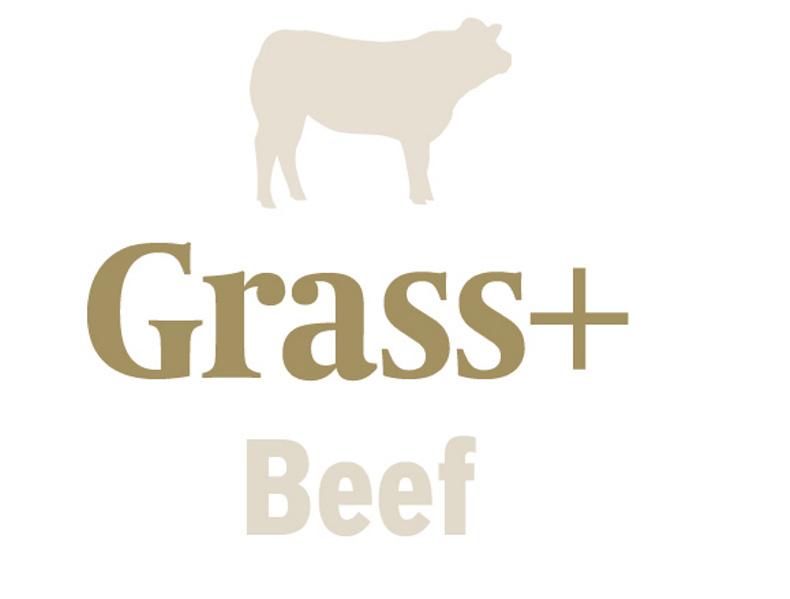




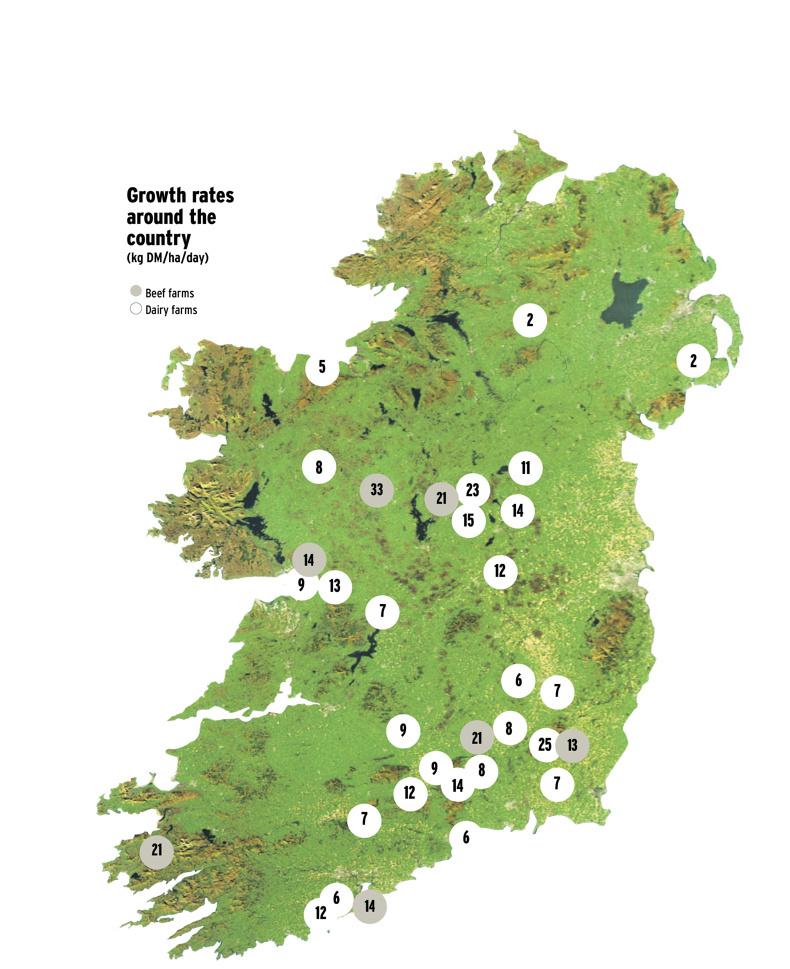
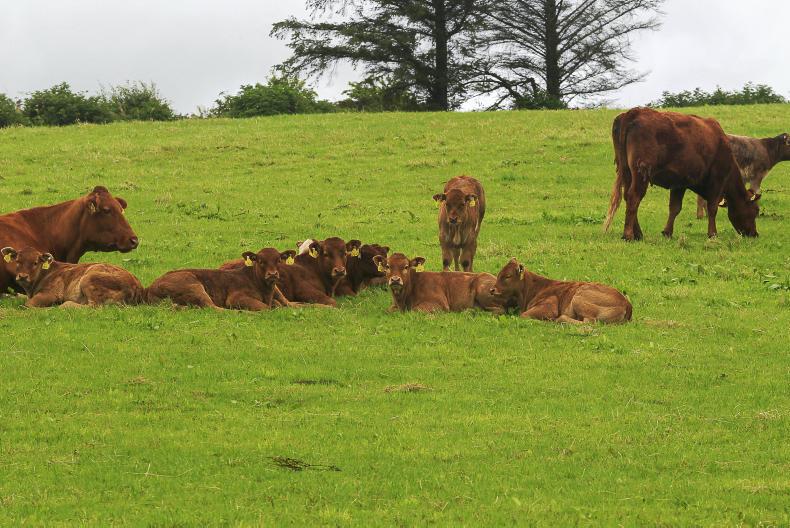
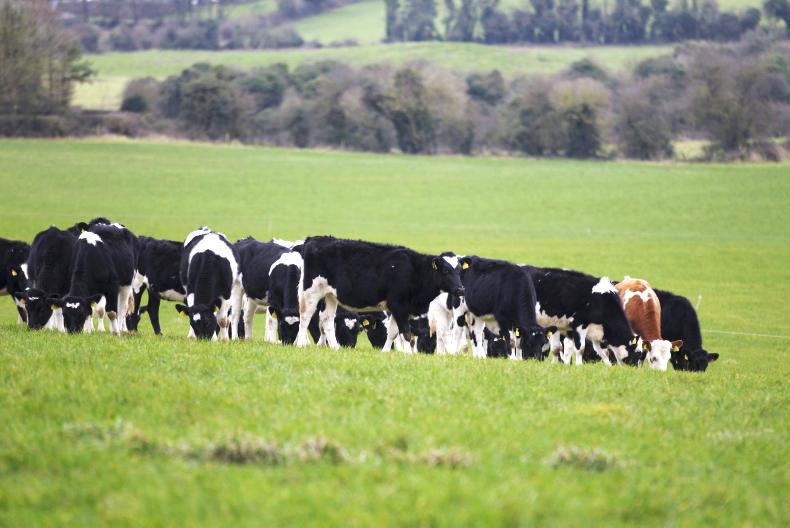

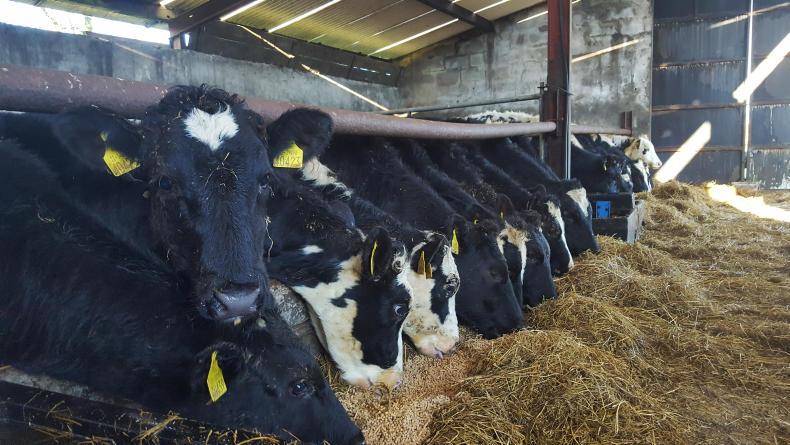


SHARING OPTIONS